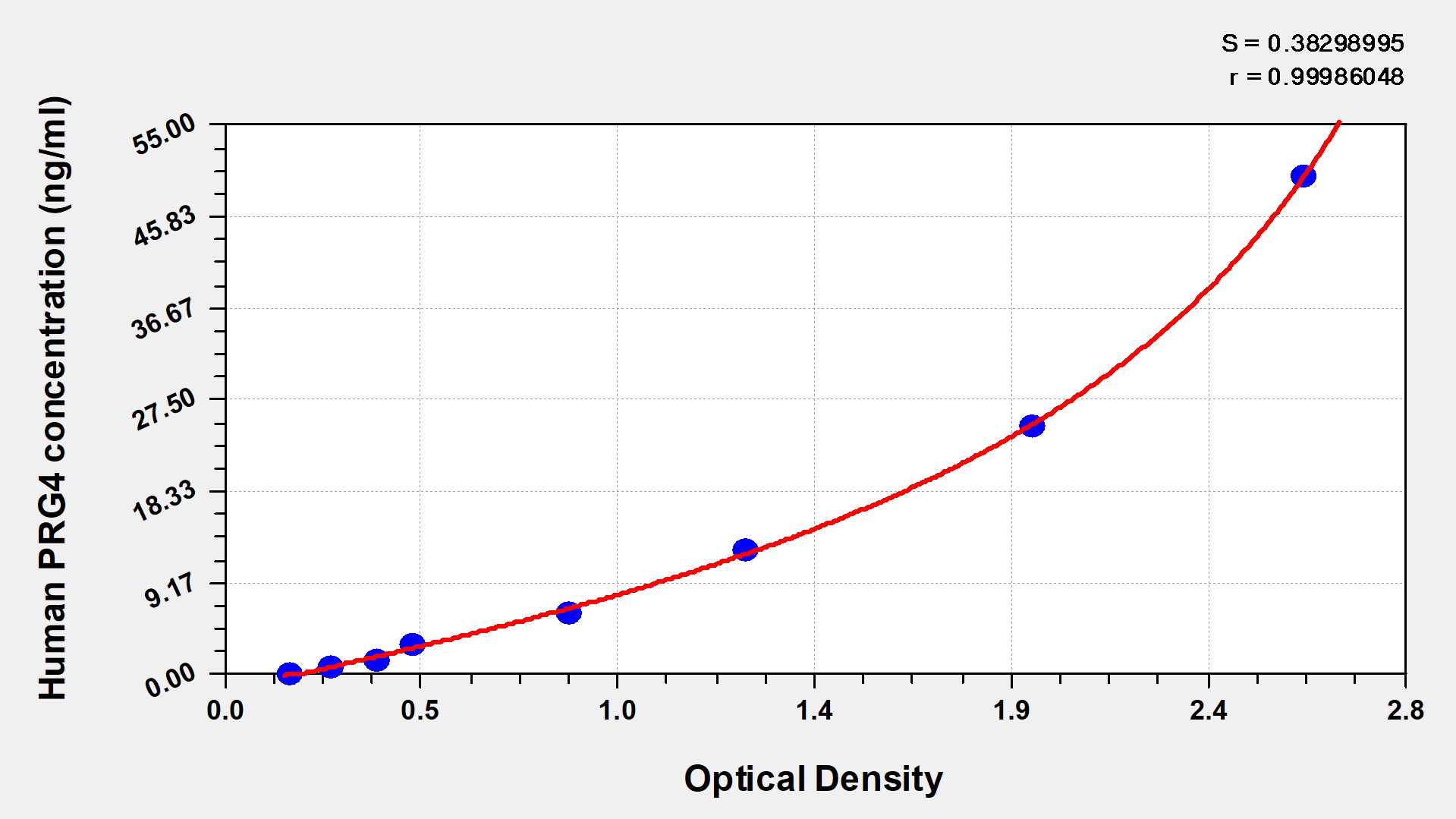The Human proteoglycan 4 (PRG4) ELISA kit is suitable for quantitative measurement of PRG4 levels in the serum, plasma, or tissue homogenates. It is not intended for diagnostic use and only used for scientific research in humans. The kit has undergone rigorous quality control in multiple parameters, including sensitivity, specificity, precision, linearity, recovery, and inter-batch difference. Refer to the product instructions for more details.
This assay employs the quantitative sandwich enzyme immunoassay technique, in which PRG4 in the samples or standards are sandwiched between pre-coated PRG4 antibody and Biotin-conjugated PRG4 antibody. HRP-avidin is then added to the wells. Following a wash to remove any unbound reagent, the TMB substrate solution is added to the wells and color develops in proportion to the amount of PRG4 bound in the initial step. The color development is stopped upon adding the stop solution, and the intensity of the color is measured at 450 nm via a microplate reader. The levels of PRG4 in the samples can be determined by referring to the O.D. (optical density) of the samples to the standard curve.
PRG4, also called lubricin, is a mucinous glycoprotein secreted by synovial fibroblasts and superficial zone chondrocytes. It is a major component of synovial fluid (SF) and therefore plays an important role in joint lubrication and synovial homeostasis. PRG4, which is naturally present at the human cornea-eyelid interface, has been proved to be involved in the reduction of the friction between the cornea and the conjunctiva. Marwa Qadri etc. revealed that PRG4 is an endogenous antifibrotic modulator in the joint and its effect on myofibroblast formation is partially mediated by CD44, but CD44 is not required to demonstrate an antifibrotic effect in vivo. Loss of PRG4 function has been linked to camptodactyly-arthropathy-coxa vara-pericarditis syndrome (CACP), an arthritis-like autosomal recessive disorder.




